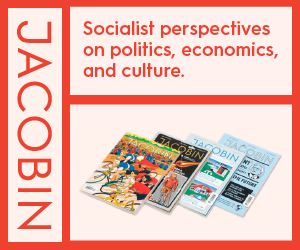Canada runs on subsidies. Why shouldn’t news media get them?
Edge: In Canada, the best argument for press subsidies is that this country runs on subsidies, or it doesn’t run at all

Photo by Alex Proimos/Wikimedia Commons
The recent Ottawa Declaration on Canadian Journalism signed by right-wing think tanks, publications and journalists calling on news media to stop taking the subsides that our largest newspapers lobbied long and hard for provided a bit of a laugh, but it actually made a few good points. If we are going to subsidize our news media, there are probably better ways to do it. The five-year, $595 million bailout that began in 2019 and has been extended until 2029 has decimated public trust in news media, with many Canadians now believing that our press has been bought and paid for by the ruling Liberals. It has also favoured legacy media, especially the large corporate players that were given the purse strings by Ottawa and thus got their enormous snouts into the trough first, elbowing aside our emerging independent online news media. The recent squealing over Google’s decision to instead go with a group of independents to distribute the $100 million a year it has promised to contribute under the Online News Act shows that our country’s media fat cats feel entitled to divvy up the loot themselves.
The fact is that countries around the world have long subsidized their news media, and there is now an enormous body of research on best practices for doing so, especially in the 15 years since the recession of 2008-09 brought a near-death experience for news media, from which they soon recovered. The more recent lingering death they have been suffering as a result of Google and Facebook cornering the market for online ads has prompted more jurisdictions to subsidize their media. Even in the US, whose First Amendment guarantees press freedom from government interference, subsidies for news media are now being offered in several states. New York committed US$90 million in May to subsidize newsrooms over three years and will pay up to half of the first US$50,000 of an employee’s salary. Illinois quickly followed with a similar package of US$25 million in tax credits over five years.
Journalism purists argue that any government funding would taint news media, but the crisis has grown to such an extent that subsidies are now considered by most to be by far the lesser of two evils. Some countries have found ways of subsidizing news media that leave little question about their independence from government. In Canada, the best argument for press subsidies is that this country runs on subsidies, or it doesn’t run at all. Governments at all levels spent $52 billion subsidizing businesses in 2022, according to one report, while Ottawa alone provided at least $18.6 billion to the fossil fuel and petrochemical industries last year, according to another.
Even our news media have been subsidized by Ottawa since long before the ongoing bailout. Magazines and non-daily newspapers have been subsidized by the Canada Periodical Fund since it was founded by a Conservative government in 2009, and before that subsidies were handed out by the Canada Magazine Fund. News media subsidies have a long history here, as newspapers and magazines got postal rate relief even before Confederation to help increase literacy. Enormous media empires have been built in Canada on the backs of public subsidies. Broadcasting and cable licences have been handed out for free, or at a very low cost compared to their value, in exchange for licensees agreeing to provide Canadian content and news coverage as part of their public service obligation. Their billions in annual profits haven’t stopped them from pleading poverty recently and asking to be released from their promises. About 900 Canadian publishers and industry associations received more than $87 million in subsidies from the CPF in 2022-23, according to our Public Accounts, including 127 that got more than $100,000 and 17 that got more than $1 million. Topping the list at $6.8 million was TVA Publications, which is owned by Quebecor and publishes magazines including 7 Jours, La Semaine, Échos Vedettes, Star Système and TV Hebdo. Even subsidies have not been able to save some media. Reader’s Digest, which recently ceased publication in Canada after 76 years, got $2 million from the CPF last year, as did BC newspaper chain Black Press, which was recently sold to an American company. Postmedia Network, which publishes dozens of community newspapers and specialty publications along with most of Canada’s largest dailies but is 98 percent owned by US hedge funds, got $1.3 million from the CPF in addition to more than $7 million in payroll tax credits from the federal and Québec media bailouts. Metroland Media, the Torstar subsidiary that laid off more than 600 workers without severance pay last year in converting its Ontario community newspapers to online-only publication, also got $1.3 million.
Maclean’s, which was once a staple of Canadian political journalism but is now a lifestyle magazine for millennials, got $1.2 million. That’s a bit less than the $1.5 million it used to get regularly as a weekly news magazine, but its conversion to monthly publication didn’t seem to lower its yearly grant much under the CPF’s fuzzy guidelines. The Walrus Foundation of Toronto got $517,637 last year to publish its eponymous magazine, but Toronto Life did even better at $636,974 and Canadian Geographic topped that with $711,922. Zoomermedia Limited of Toronto, which publishes the Zoomer lifestyle magazine for boomers, got even more at $864,851. Other magazines that made out well last year were House & Home, whose publisher got $1.1 million, and Cottage Life, which got $540,310.
Some groups you would never guess are in the publishing business get hundreds of thousands of dollars a year from the CPF. The Retired Teachers of Ontario got $245,256 last year, while Old Autos Publications got $144,681 and Ontario Snowmobiler Publishing Ltd. got $112,377. Universities Canada got $129,791 and the Ontario Federation of Anglers and Hunters got $523,687. Other obscure publications helped fill out the list of grant recipients. Vancouver-based Modern Dog magazine got $173,934, while the publisher of health and wellness magazine alive got $284,371. Online-only publications also now get grants from the CPF, with Vancouver’s long-publishing news website The Tyee getting $149,680 last year and Village Media, which publishes dozens of local news outlets across Ontario, receiving $531,068. The Logic, an online business and technology publication, also got $149,680 (Canadian Dimension, which has been publishing since 1963 and went online-only in 2019, receives modest grant support from the Department of Canadian Heritage and has not applied for funding from Google). Even the industry associations that lobby for media subsidies get government money. News Media Canada, which has recently led two campaigns for federal bailouts, got $367,294 from the CPF in 2022-23.
Cultural subsidies have long been a way of life in Canada and are arguably themselves part of our culture. The Canada Book Fund gave out more than $61 million in 2022-23 to more than 500 publishers and industry associations, while the Canada Cultural Investment Fund dispensed more than $25 million for such worthy causes as ballet, opera and symphonies. The Canada Cultural Spaces Fund distributed another $74.4 million for such things as art galleries, theatres, museums and historical parks, of which $2.65 million went to the Calgary Stampede Foundation. The Canadian Canoe Museum topped that list at $6.89 million, followed by La fondation du théâtre du nouveau monde in Montreal at $6 million, while the Thunder Bay National Exhibition Centre and Centre for Indian Art got $4.88 million.
With such levels of subsidy for other businesses and cultural institutions, resistance to providing support to such a vital public service as news media seems a bit short-sighted. A better question might be whether subsidies can be distributed more fairly and in ways that ensure the independence of our news media.
Marc Edge is a journalism researcher and author who lives in Ladysmith, BC. His books and articles can be found online at www.marcedge.com.










